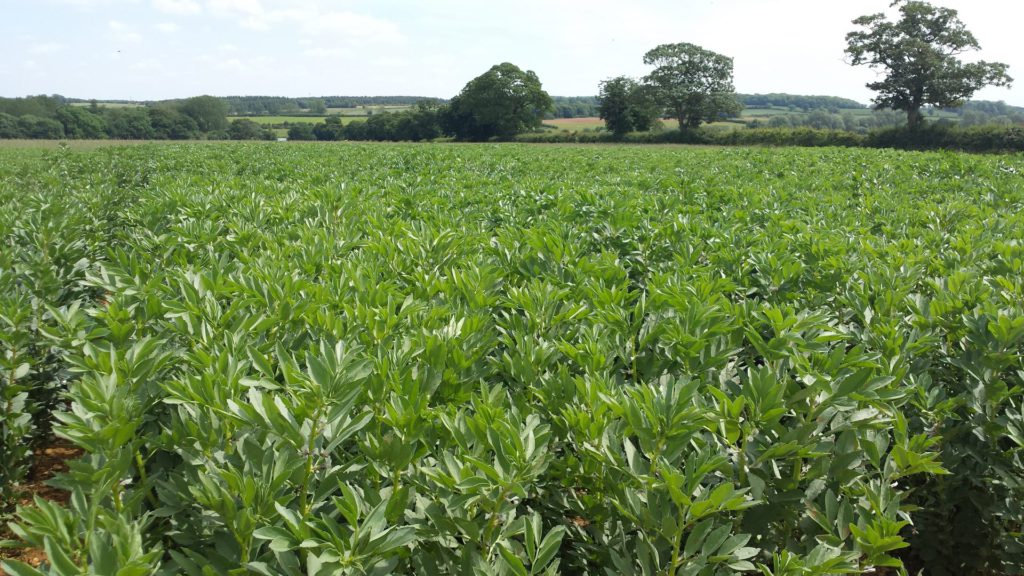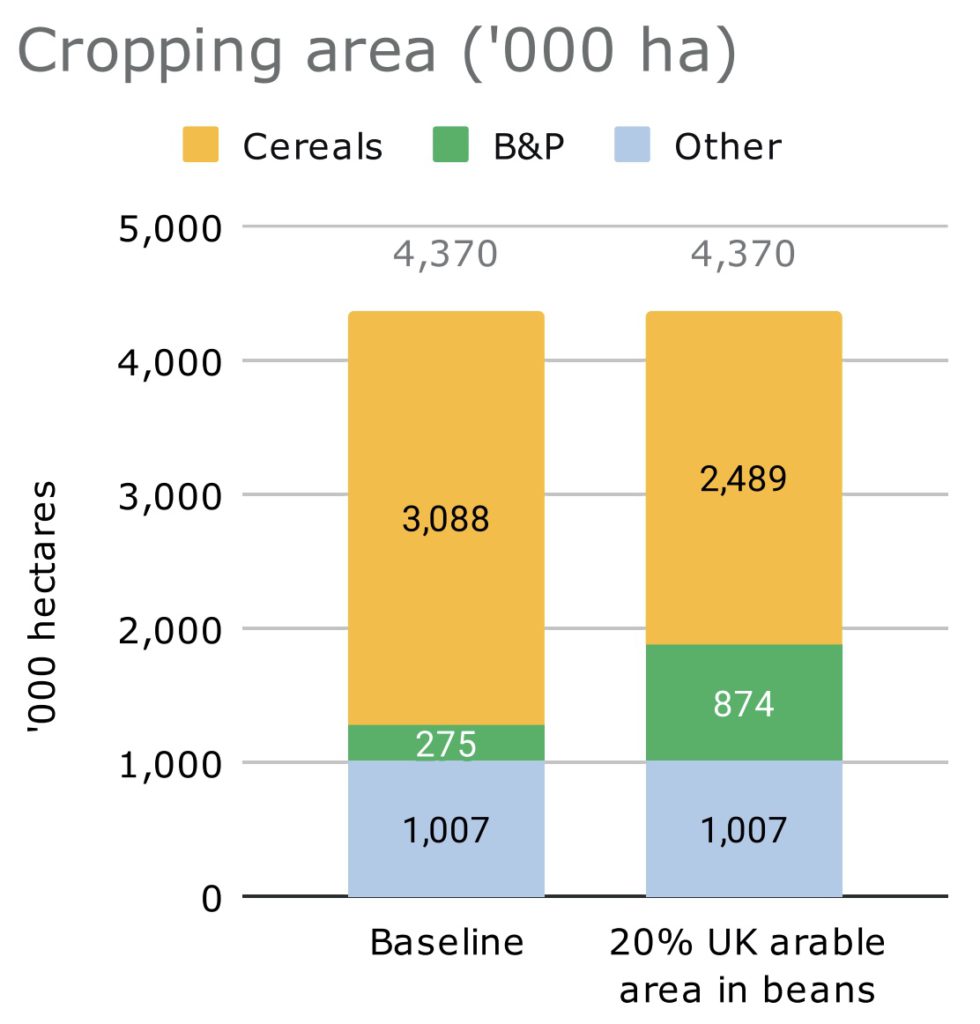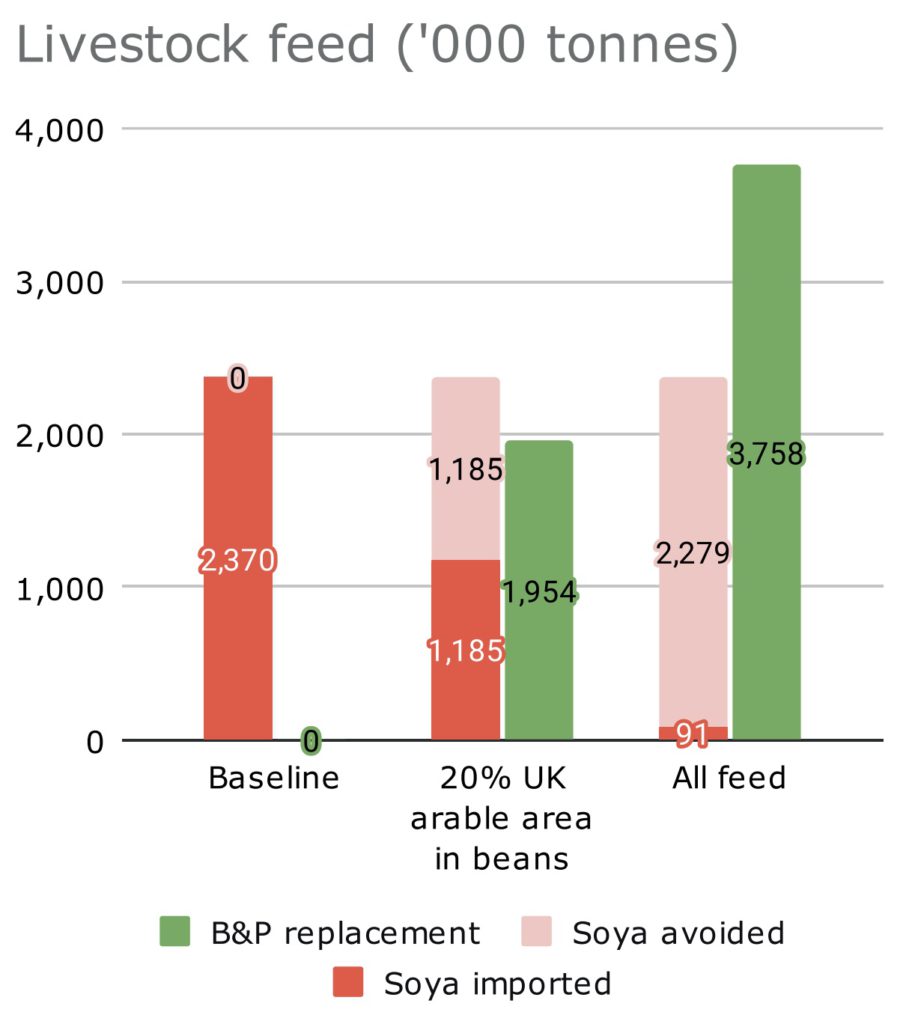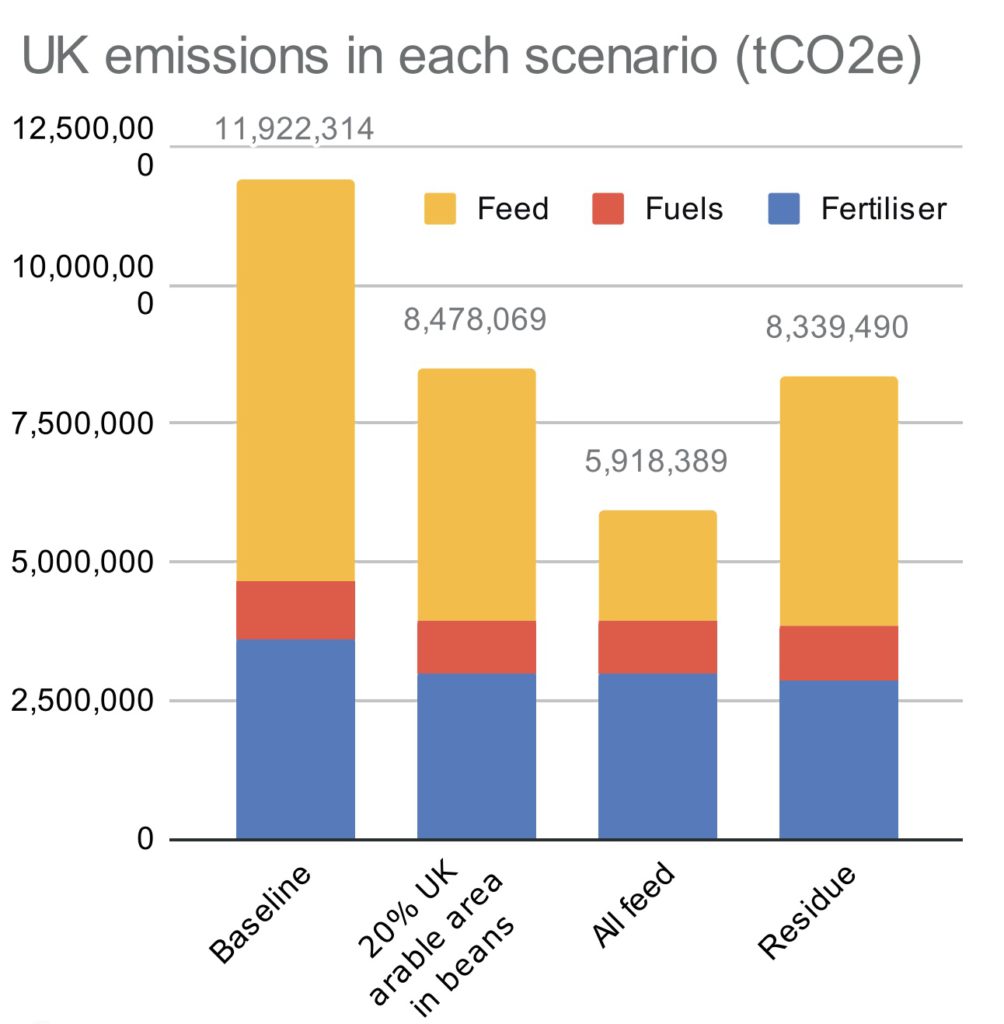

Agricultural emissions could potentially be reduced by 3.4Mt CO2e by replacing half of soyabean meal in livestock feed with homegrown pulses as a result of reduced deforestation and land use change, lower synthetic fertiliser use and fuel savings. We are delighted to share more detail with you here.
Download this post as a PDF here.
In 2023, only 6.3% of the UK’s 4.3 million hectares of cropping land grew beans or pulses. These crops have significant agricultural potential; offering soil health benefits, livestock feed options, and alternatives to currently stressed rotations. The NCS project hopes to harness this potential by expanding the pulse cropping to 20% of the total arable area in the UK. This would involve increasing the annual area of beans and pulses grown from 275,090 ha’s (6.3%) to 874,026 ha’s (20%).
The impact of expanding pulse cropping
Expanding the pulse cropping area will result in GHG emissions reductions in the areas highlighted
below:
- Reduced fuel usage
- Direct fertiliser avoidance
- Indirect fertiliser avoidance as a result of leguminous residues
- Providing a low emission feed alternative to imported soya

Reducing fuel usage
Growing and harvesting pulses requires less fuel than growing cereal crops. FCT modelling on the operations needed to grow cereals indicates that 91 litres of diesel/ha is required, compared to 84 litres/ha to grow beans and pulses. This reduces emissions by 37,524.09 tCO2e when scaled out across the UK arable area.
Reducing fertiliser reliance
Growing pulses like peas and beans reduces reliance on synthetic nitrogen fertilisers both during the pulses cropping year and for subsequent crops, as these plants fix nitrogen into the soil. In 2023, the UK applied an average of 125 kg N/ha of fertiliser, totalling 546,266 tonnes and emitting 3.6 MT CO2e. By expanding pulse cultivation, the UK could save 74,867 tonnes of nitrogen fertiliser annually, directly avoiding 494,925 tCO2e emissions. Moreover, pulse residues can enhance nitrogen availability for subsequent crops, amounting to 35–70 kg N/ha (depending on soil conditions etc.). This could save an additional 20,963–41,926 tonnes of nitrogen annually across the UK, equating to 138,580-277,160 tCO2e.

Substitution of imported soya feed
In 2023, the UK imported 2.37 million tonnes of soya feed, 74% from South America, resulting in 7.3 MT CO2e emissions. UK grown beans could replace some of this soya, substantially reducing the footprint of animal feed. If all UK grown beans within the scenario proposed by NCS were used within compound feeds and straights, they could replace 96% of soya imports, avoiding 5.3 MT CO2e.
A more realistic scenario is replacing 50% of imported soya with 1.95 million tonnes of UK
beans, requiring 454,468 hectares (52% of beans/peas cropping area). This would cut
feed emissions to 4.5 MT CO2e, saving 2.8 MT CO2e compared to current levels of soya imports.

Conclusion
The expansion of beans and pulses to cover 20% of the UK cropping area could save 3.4
MT CO2e (equivalent to 7% of UK agriculture’s total emissions). This would increase if more
of the beans and pulses grown could displace imported soyabean meal.

Sources:
- Fertiliser data from the British Survey of Fertiliser Practice, 2023
- Land use data from DEFRA land use and crop areas 2023
- Fuel usage based on FCT modelling of the field operations
- Soya imports from EFECA and UK soya manifesto, 2024 progress
report - Protein content: Johnston et al, 2019 https://doi.org/10.1016/j.
livsci.2018.12.015


Recent Comments